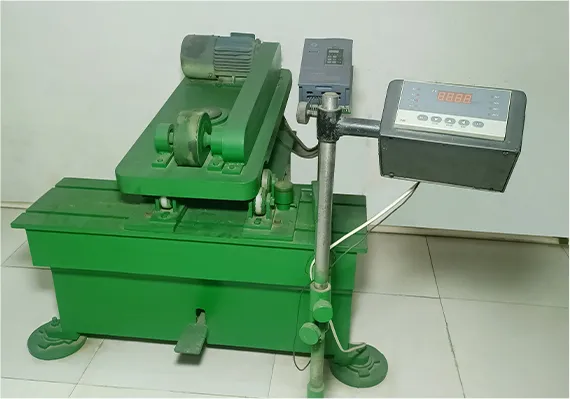 Afrikaans
Afrikaans  Albanian
Albanian  Amharic
Amharic  Arabic
Arabic  Armenian
Armenian  Azerbaijani
Azerbaijani  Basque
Basque  Belarusian
Belarusian  Bengali
Bengali  Bosnian
Bosnian  Bulgarian
Bulgarian  Catalan
Catalan  Cebuano
Cebuano  Corsican
Corsican  Croatian
Croatian  Czech
Czech  Danish
Danish  Dutch
Dutch  English
English  Esperanto
Esperanto  Estonian
Estonian  Finnish
Finnish  French
French  Frisian
Frisian  Galician
Galician  Georgian
Georgian  German
German  Greek
Greek  Gujarati
Gujarati  Haitian Creole
Haitian Creole  hausa
hausa  hawaiian
hawaiian  Hebrew
Hebrew  Hindi
Hindi  Miao
Miao  Hungarian
Hungarian  Icelandic
Icelandic  igbo
igbo  Indonesian
Indonesian  irish
irish  Italian
Italian  Japanese
Japanese  Javanese
Javanese  Kannada
Kannada  kazakh
kazakh  Khmer
Khmer  Rwandese
Rwandese  Korean
Korean  Kurdish
Kurdish  Kyrgyz
Kyrgyz  Lao
Lao  Latin
Latin  Latvian
Latvian  Lithuanian
Lithuanian  Luxembourgish
Luxembourgish  Macedonian
Macedonian  Malgashi
Malgashi  Malay
Malay  Malayalam
Malayalam  Maltese
Maltese  Maori
Maori  Marathi
Marathi  Mongolian
Mongolian  Myanmar
Myanmar  Nepali
Nepali  Norwegian
Norwegian  Norwegian
Norwegian  Occitan
Occitan  Pashto
Pashto  Persian
Persian  Polish
Polish  Portuguese
Portuguese  Punjabi
Punjabi  Romanian
Romanian  Russian
Russian  Samoan
Samoan  Scottish Gaelic
Scottish Gaelic  Serbian
Serbian  Sesotho
Sesotho  Shona
Shona  Sindhi
Sindhi  Sinhala
Sinhala  Slovak
Slovak  Slovenian
Slovenian  Somali
Somali  Spanish
Spanish  Sundanese
Sundanese  Swahili
Swahili  Swedish
Swedish  Tagalog
Tagalog  Tajik
Tajik  Tamil
Tamil  Tatar
Tatar  Telugu
Telugu  Thai
Thai  Turkish
Turkish  Turkmen
Turkmen  Ukrainian
Ukrainian  Urdu
Urdu  Uighur
Uighur  Uzbek
Uzbek  Vietnamese
Vietnamese  Welsh
Welsh  Bantu
Bantu  Yiddish
Yiddish  Yoruba
Yoruba  Zulu
Zulu conveyor drum lagging
The Importance of Conveyor Drum Lagging
Conveyor systems play a crucial role in modern industrial operations, enabling efficient transportation of materials across various sectors, including mining, manufacturing, and logistics. One essential component of these systems is the conveyor drum, which is designed to drive the belt forward. However, the performance and longevity of conveyor drums can be significantly enhanced through a process known as lagging.
Lagging refers to the application of a protective layer, typically made of rubber or other materials, on the surface of the conveyor drum. This technique serves multiple purposes, primarily aimed at increasing the drum's traction and preventing slippage between the drum and the conveyor belt. When the belt operates under heavy loads, especially in conditions involving moisture or dirt, there is a risk of slippage. This not only reduces the efficiency of the conveyor system but can also lead to increased wear and potential damage to the belt and the drum itself.
One of the significant benefits of conveyor drum lagging is improved grip. The added surface texture created by the lagging material enhances friction, ensuring that the conveyor belt remains securely in place during operation. This is particularly important in inclined installations or environments where heavy loads are common. Enhanced grip translates to smoother operation, reducing the strain on the entire conveyor system and contributing to a longer lifespan for both the belt and the drum.
conveyor drum lagging

Moreover, lagging serves as a protective layer for the drum. Without this additional layer, the metallic surface of the drum is exposed to wear and tear from constant contact with the abrasive material on the conveyor belt. The drum can suffer significant damage over time, resulting in costly repairs or replacements. By investing in quality lagging, operators can mitigate these risks, protecting their equipment and minimizing downtime.
Another vital aspect of conveyor drum lagging is its ability to absorb shocks and vibrations. During operation, conveyors can experience significant impacts from the materials being transported, which can lead to increased wear on the drum and other components. Lagged drums help dissipate these forces, reducing the impact on the machinery and further extending its operational life.
Choosing the right type of lagging is essential for optimizing performance. Various materials and hardness levels are available, each suited for specific applications and environmental conditions. For instance, in environments where heavy abrasion is a concern, a more durable rubber compound might be necessary. Conversely, in applications requiring lower friction, a softer lagging material could be more appropriate.
In conclusion, conveyor drum lagging is a vital component of effective conveyor system management. By enhancing traction, providing abrasion resistance, and minimizing the impact of shocks, lagging significantly contributes to the efficiency and longevity of conveyor systems. Industries that prioritize maintaining their conveyor systems will find that investing in high-quality drum lagging is a strategic decision that pays off through reduced maintenance costs and improved productivity. As technology and materials continue to evolve, staying informed about advancements in lagging can further enhance operational efficiency, ensuring that conveyor systems operate at peak performance.
-
Trusted Conveyor Solutions from Leading Conveyor Idler Roller ManufacturersNewsJun.27,2025
-
Reliable Return Idler Solutions for Efficient Belt Conveyor SystemsNewsJun.27,2025
-
Precision Conveyor Accessories for Streamlined Material HandlingNewsJun.27,2025
-
High-Quality Belt Conveyor Idler Solutions for Efficient Material HandlingNewsJun.27,2025
-
High-Performance Belt Conveyor Pulleys for Reliable Material HandlingNewsJun.27,2025
-
Enhancing Material Handling EfficiencyNewsJun.27,2025





























